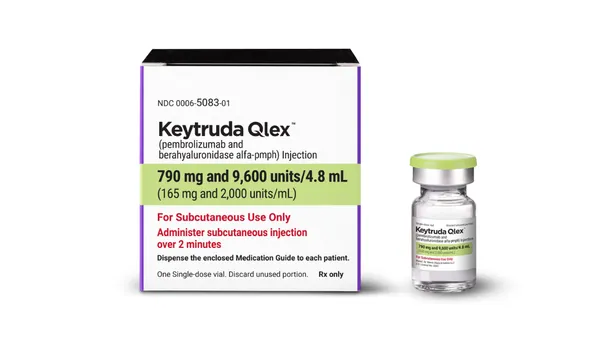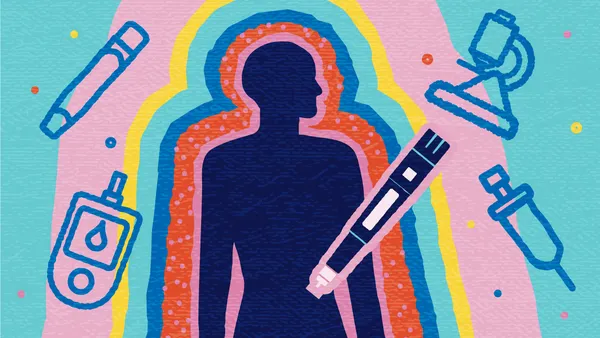Opinions What’s on your mind What have you heard lately? In the September issue of PharmaVOICE, we asked readers to relate the most surprising statistics or strange facts that they have come across. PharmaVOICE learned that every human spent about half an hour as a single cell and that 70% of consumers think companies have too much personal information. Here are some other interesting statistics and fast facts. Information dis-load These are a couple of interesting nuggets pulled from a reader survey we did of physicians as primary market research prior to the launch of Family Medicine Net Guide, our consumer publication: Based on survey responses from 475 physicians, 99.37% of respondents agreed that an informed patient is a patient better able to discuss symptoms, illnesses, conditions, and treatment options. From this same survey, 63% of doctors agreed that patients who use the Internet “usually access reliable information,” but 86% of physicians have seen patients “access incorrect or potentially dangerous information on the Internet.” The takeaway is that health information is empowering to patients and helps the healing process. But, care must be taken that while searching multiple sites on the Internet, the patient notes the credibility of each Website and double checks the validity of information with a healthcare provider before acting on it. Some tips to look for: • Are all articles on the Website “peer-reviewed?” • Did a practicing physician write the article? (a byline should appear saying who the author is.) • Is the Website well-designed? • Does the Website sell pharmaceuticals? James P. O’Brien Senior Director, Public Relations & Association Advocacy MD Net Guide Reducing patient-dropout rates A fact that few product managers currently know, and one that is key to return on investment (ROI), is that poor patient retention is one of the primary reasons direct-to-consumer (DTC) advertisements are not as effective as they could be. Most DTC programs are targeted at patient acquisition but little to no attention is given to patient retention, which is the key to ROI success for a chronic medication. By the fourth or fifth prescription refill, about 50% of all patients who were started on a product as a result of a DTC advertisement have dropped out of therapy. By the end of the first year of treatment, 50% to 100% of patients have dropped out of therapy depending on the specific patient population. Imagine the lost sales and waste of money spent on patient acquisition. What is the primary reason? Patients are making decisions because they are in control of their drug therapies at home. Patients are trying to manage their prescription drug therapies but are not being given the information they need to manage these therapies safely and wisely. And often patients are deciding to drop out of therapy because they do not know how to determine if the medication is helping them or how to manage a side effect. Unfortunately, the medical complications of patients prematurely dropping out of therapy can be serious and sometimes life-threatening. Pharmaceutical product managers need to develop a patient-compliance strategy before the DTC campaign is planned. In addition, they need to develop strategies based on sound patient counseling techniques to help convince/motivate/persuade patients to stay in therapy. Now, imagine the skyrocketing sales if product managers could keep patients on chronic treatments beyond the current four or five months. Dorothy L. Smith, Pharm.D. President and CEO Consumer Health Information Corp. (Editor’s note: See the November issue of PharmaVOICE for additional coverage on this topic.) Believe it or not The best statistic that I have heard lately is that when conducting an Internet search using the word “statin,” the 17th most popular result was for the “Staten Island Ferry.” It may not be the most interesting fact, but it’s definitely the funniest one I’ve heard in a long time. Stu Klein President The Quantum Group Generics rule … in court According to a 2002 Federal Trade Commission report, of all patent infringement cases in which the court had ruled, generic applicants had prevailed in 73% of the cases. Jeb Keiper MBA Student Alfred P. Sloan School of Management Massachusetts Institute of Technology (Another fast fact — there are more than 70 biotech/ pharmaceutical companies within a one-mile radius of Sloan.) The privacy paradox PharmaVOICE points out that more than 70% of Americans are concerned that corporate America knows too much about them and are outraged when such knowledge is used in marketing. While such concerns are understandable and must be respected (on legal and moral grounds) in direct-to-consumer and direct-to-patient marketing, herein lies the privacy paradox: the smarter and more informed marketing is, the less annoying it will be. The danger is that such thinking spills over into marketing to professionals. What’s even more ominous is the assault on commercial free speech being conducted at the federal and state levels. The Direct Marketing Association (DMA) has formed a Pharmaceutical Marketing Council to address such concerns. I encourage interested parties to contact me or the DMA to find out how to get involved. Terry Nugent Director of Marketing Medical Marketing Service Inc. (MMS) The knee bone is connected … Radiographic evidence of osteoarthritis of the knees is more common in women, whereas osteoarthritis of the hips is more common in men. (2002. Epidemiology. Osteoarthritis [online]. Merck & Co., 2001 [cited 17 December 2002]). The cause for this gender difference, particularly in the higher rate of arthritic knees in women, may be high-heeled shoes. High-heeled shoes force women to alter the way they normally maintain balance and puts strain on the kneecap and on the inside of the knee joint. (2002. Osteoarthritis. UCDavis Health System: The Well-Connected Report [online]. UCDavis, 1999 [cited 17 December 2002]) Amanda Judge Research and Media Associate Healthcare Communications Group In need of a few good recruits Notwithstanding numerous advances in pharmaceutical research and development technology, it all still comes down to people. The failure of more than 80% of clinical studies to meet their completion timelines is due mainly to delays in patient recruitment. These are the steps we see in improving the weakest link in the drug-development pipeline: increasing accountability for trial timeline outcomes and placing strategic-level resources against the completion of trials for drugs with strategic-level potential in the marketplace. Frank Kilpatrick President Healthcare Communications Group
An article from












